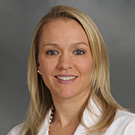Sarcoma is a rare group of cancers that can pose considerable challenges for both patients and their doctors. In the United States alone, the American Cancer Society estimates that over 13,500 new cases of soft tissue sarcomas and nearly 4,000 bone sarcomas will be diagnosed in 2024.
Seeking care from experienced specialists remains the most effective approach for treating sarcoma. When patients are evaluated and managed by a team of highly skilled experts specializing in this particular type of cancer, they receive precise diagnostics, tailored care, and personalized treatment plans throughout their journey to recovery.
What is Sarcoma?
Sarcoma refers to tumors that develop in the bones or connective tissues of the body.
While many cancers develop in organs such as the lungs or breasts, soft tissue sarcomas develop in the supportive tissues surrounding bodily structures, including muscles, tendons, nerves, fat and blood vessels. Soft-tissue sarcomas are more common than bone sarcomas.
Sarcomas are rare, accounting for less than one percent of all solid cancers. However, in children, sarcomas account for approximately 15-20% of pediatric cancers.
Types of Sarcomas
There are more than 150 subtypes of sarcomas, each with its own characteristics and treatments.
In adults, common types of sarcomas include:
- Liposarcoma: Originating in fatty tissues, often in the limbs or abdomen.
- Undifferentiated Pleomorphic Sarcoma (UPS): A rare cancer that typically begins in soft tissues of the body, such as the arms or legs.
- Leiomyosarcoma (LMS): Developing in smooth muscles, commonly found in organs like the intestines, stomach, or blood vessels.
- Fibrosarcoma: Rare tumors originating in fibrous connective tissue.
- Dermatofibrosarcoma Protuberans: A skin cancer that arises in the middle layer of the skin.
In children, sarcomas commonly include:
- Osteosarcoma: The most prevalent bone sarcoma in children, often affecting the knee or shoulder.
- Ewing’s Sarcoma: A primary bone sarcoma.
- Rhabdomyosarcoma: The most common soft tissue sarcoma in children.
- Synovial Sarcoma: A rare soft tissue sarcoma that primarily affects children and young adults.
Who Does Sarcoma Affect?
Sarcomas can affect people of all ages, from children to older adults.
The types of sarcomas diagnosed in adults and children vary. Malignant soft tissue tumors are more common in adults, while malignant bone tumors are predominant in children. Soft tissue sarcomas are most prevalent in people over 65, although they can occur at any stage of life.
While there’s not a clear cause for most sarcomas, some are associated with genetic factors or pre-existing conditions.
Underlying conditions that have been associated with an increased risk of developing sarcomas include lymphedema, certain genetic syndromes, such as neurofibromatosis type 1 and Li-Fraumeni syndrome, and previous radiation therapy for other cancers.
Treatments for Sarcoma
Treating sarcomas can be challenging because they’re rare and there are many different types. Cancer specialists match the treatment to the specific type, where it is, and how far it’s spread to get the best results.
Sarcomas can also be difficult to treat because they often grow close to important parts of the body, like nerves and blood vessels, making surgeries to remove them more complex. That’s why it’s very important to work with a team of doctors, including oncologists, who are well-trained and experienced in treating sarcomas.
Because sarcomas are rare, doctors specializing in treatment for this type of cancer often work in special academic hospitals or cancer centers.
A team of healthcare professionals for sarcoma treatment can include:
- Radiologists skilled in interpreting X-rays, MRIs, and CT scans
- Interventional radiologists who specialize in performing precise biopsies
- Pathologists experienced in analyzing tissue samples for accurate diagnosis
- Radiation oncologists who may recommend radiation therapy alongside surgery
- Medical oncologists proficient in chemotherapy, hormonal therapy, immunotherapy, and targeted therapy
- Orthopedic oncologists who specialize in bone and soft tissue tumors
- Surgical oncologists specializing in tumor removal, often working with other surgeons like plastic or vascular surgeons
- Pediatric oncologists dedicated to treating children and young adults suffering from cancer
At Stony Brook Cancer Center, the collaborative effort of cancer specialists provides a comprehensive approach to managing sarcomas and developing treatment strategies for each patient’s specific cancer type and location. Nurses, social workers and nutritionists are an essential part of the team, ensuring that all aspects of a patient’s well-being are appropriately attended to for optimal treatment.














